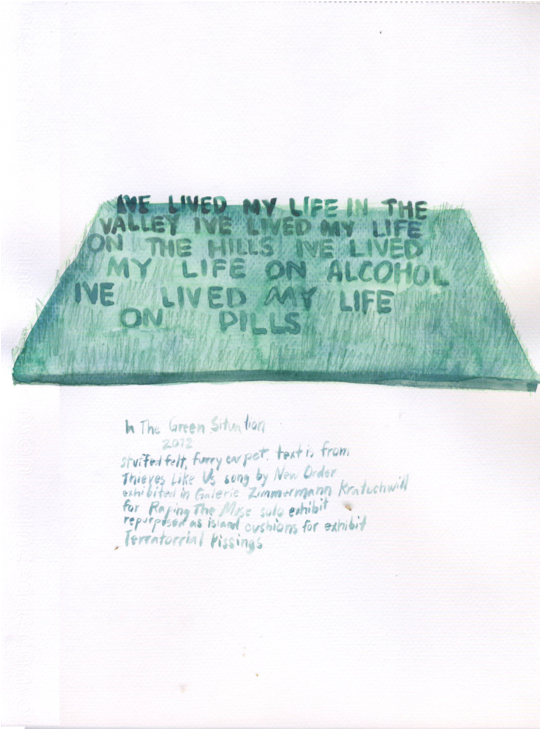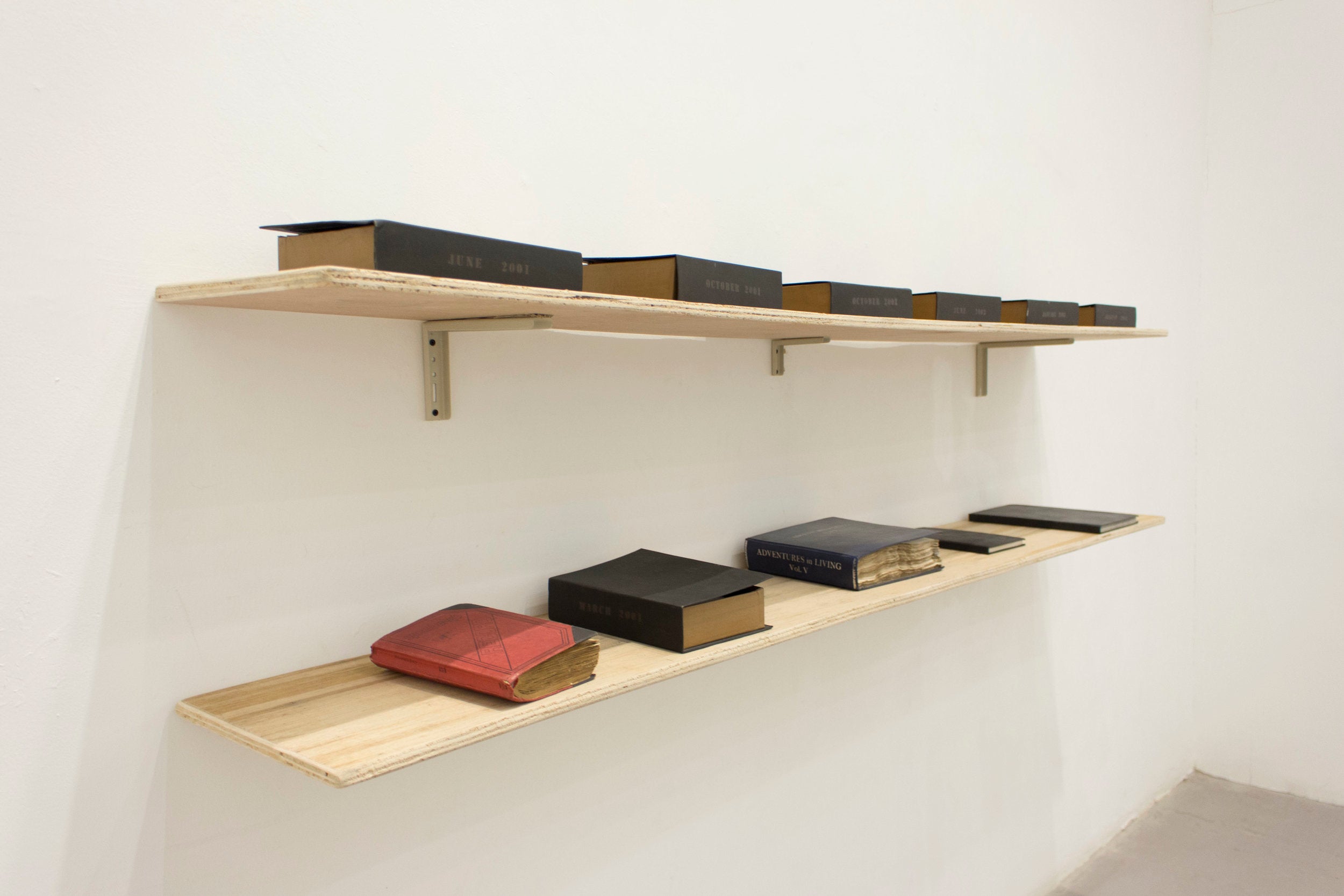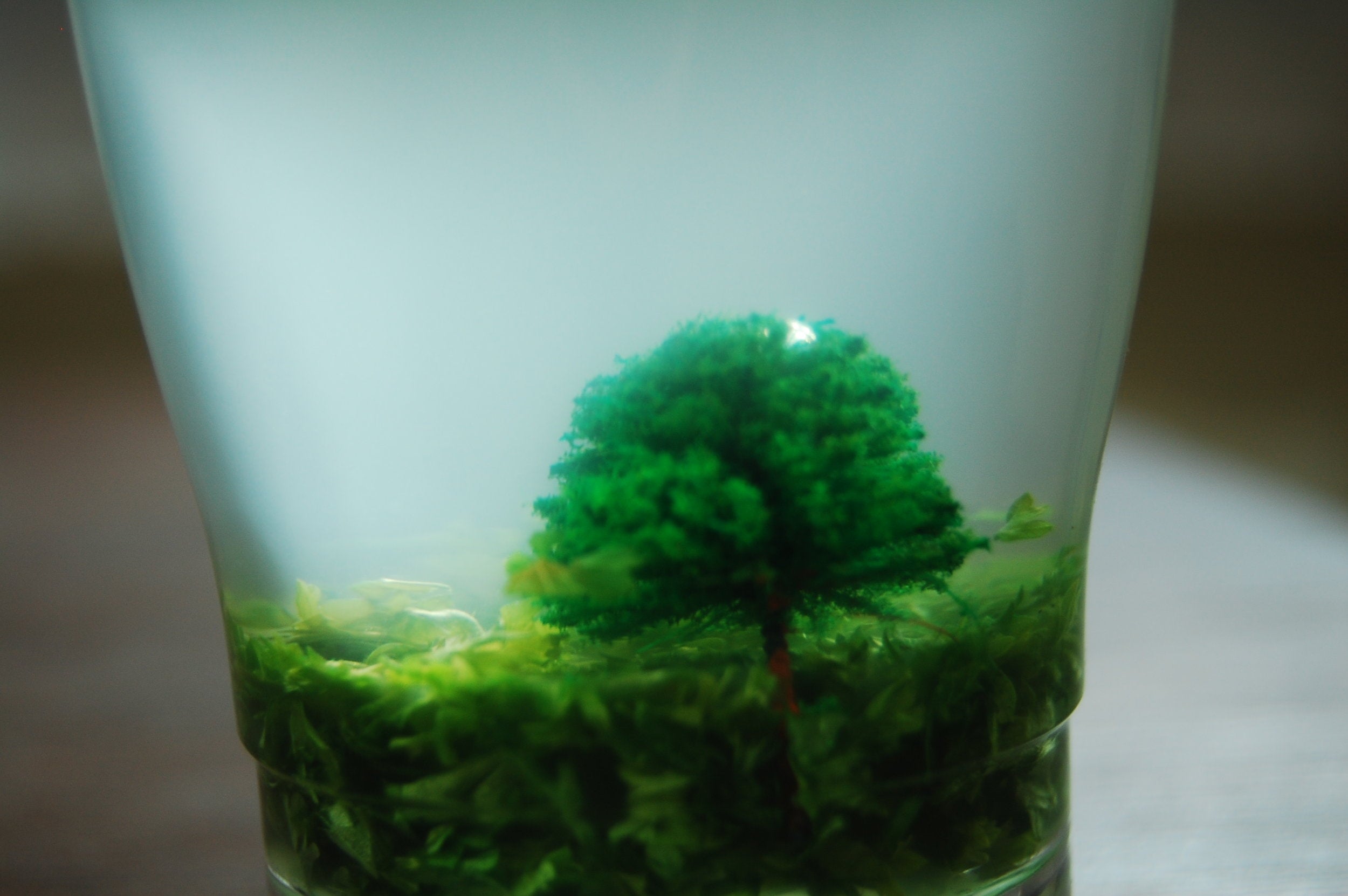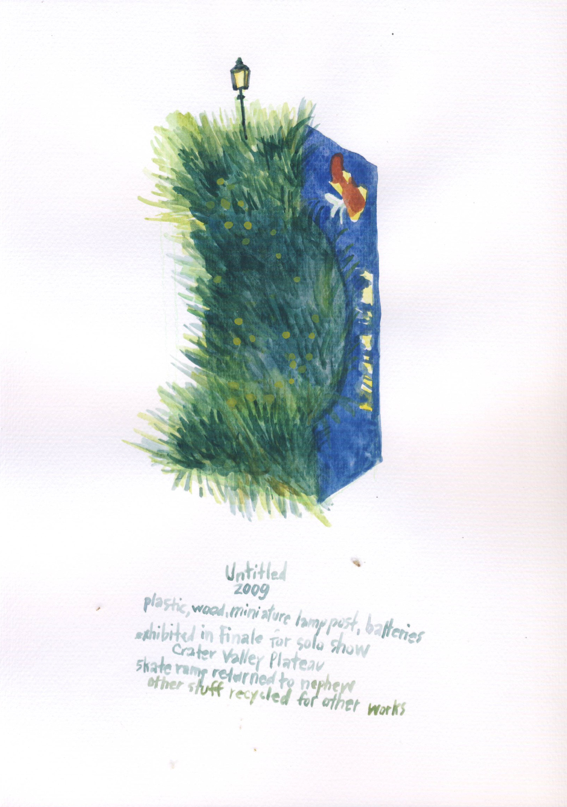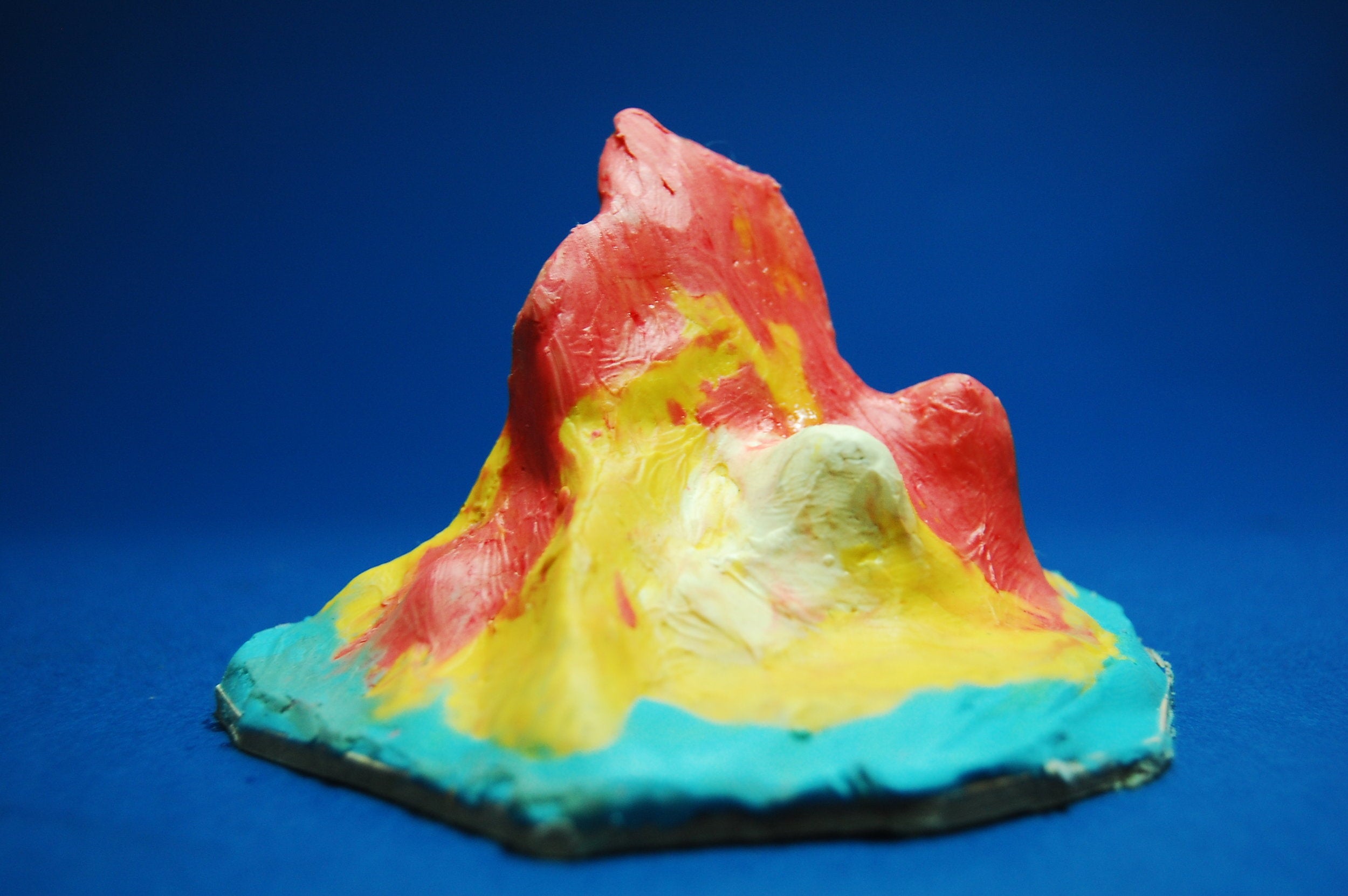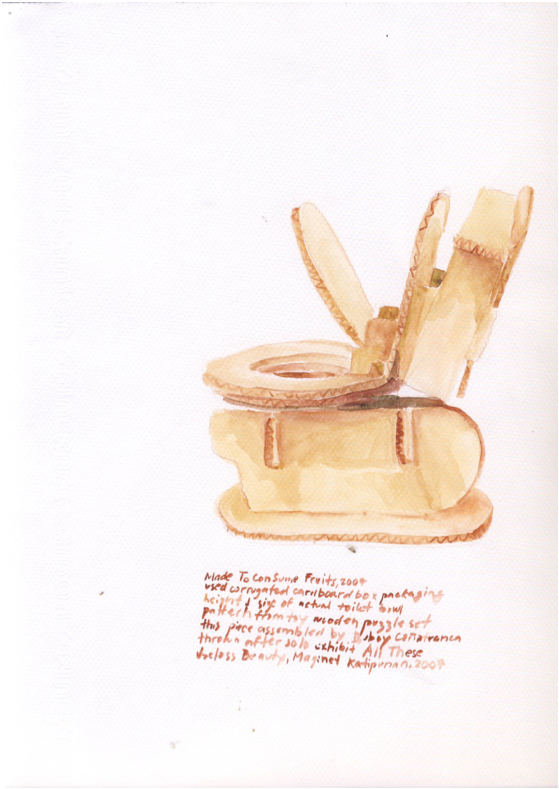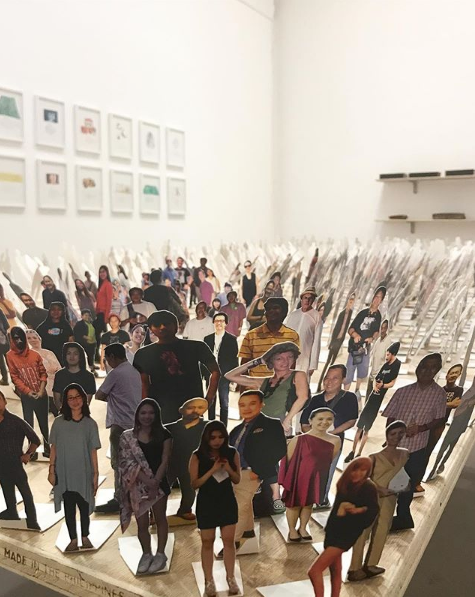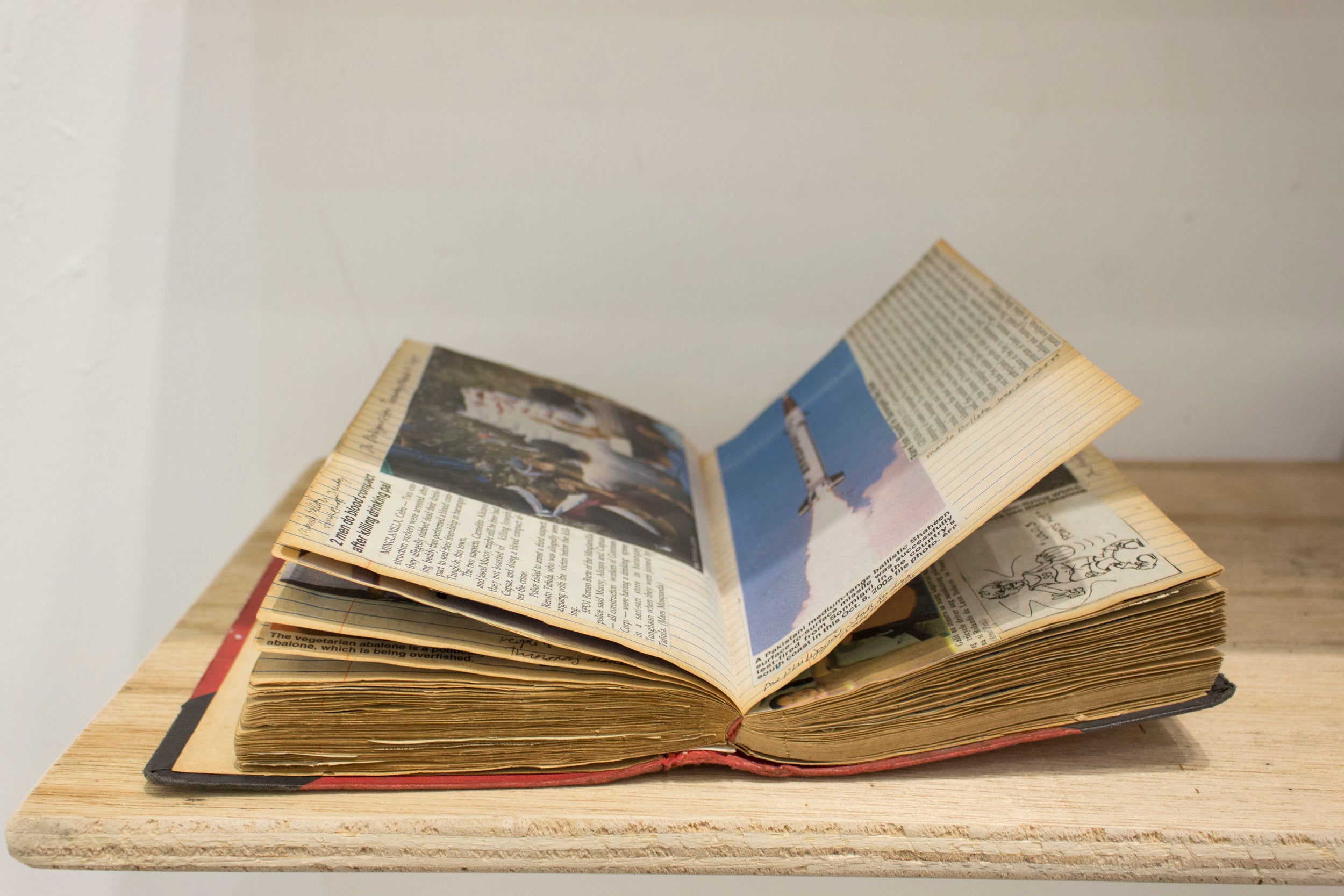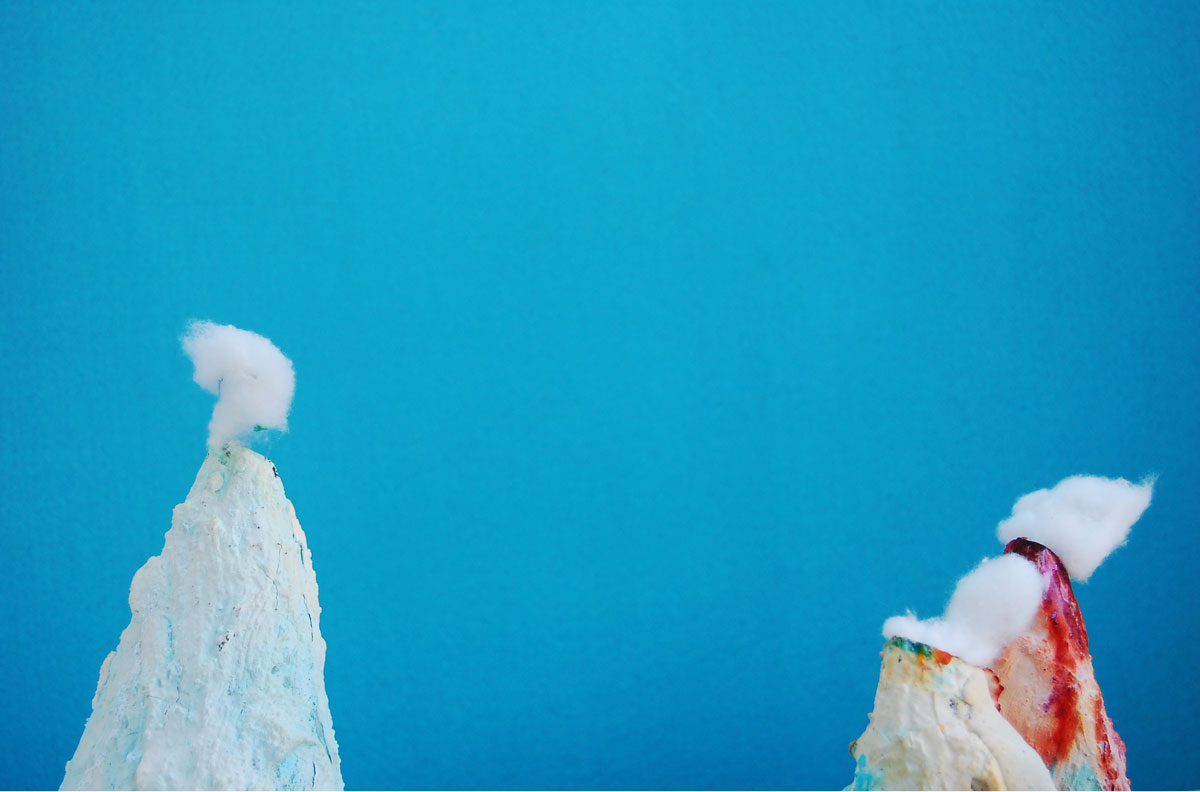Declassified Field Notes from the Black Hole





LENA COBANGBANG
16 MAY - 2 JUNE 2018
-
Putting the anarchy of memory in order, Lena Cobangbang archived her artworks from the past that perished, were forgotten, or went missing. Based on photographic evidence or memory, she painted the artworks on paper using watercolor, a medium as tenuous as trying to remember. Like memory, watercolor paintings act like stains and faded documents. They look like pale traces of the actual event, a vague semblance of the genuine experience, tinted forms of real objects.
Good, bad and secret plans are declassified in this exhibit. Unrealized projects and abandoned ideas are compiled in the form of zines and presented together with a selection of art books she made as far back as twenty years ago, when she was still an art student in college. Out of the dust, her thoughts and feelings, failures and dreadful desires, old visions, dead concepts, unsent letters, and sleeping spirits are reanimated and contained in a library of pipe dreams.
Old works from Crater Valley Plateau and Overland, photos of landscapes made from gelatin and clay, are reprinted and framed, providing an ideal setting for the world that she tried to recreate. This world exists, but it is also all in her mind, crafted, recalled, revised, constructed, every time different, the same old thing but always a surprise.
A third edition of her past installation, Pindrops – mini standees or cutout photos of people in the art scene, shows a diverse group of people she encountered. The people she knows in the art scene tripled in twelve years. The first edition, shown in 2006 at the CCP 13 Artists Awards exhibit, included 200 people. The current edition shown this year 2018 includes 600 people. This may be an indicator of the expansion of the art scene and her scope of engagement in it. The first edition was made with photos she herself took at a time when there were no smart phones and before Facebook. The third edition shown in this exhibition includes some people she has not met and only sees on social media. Some of the pictures were grabbed online.
From Cobangbang’s point-of-view, every one in the art scene make an impact even if it is only a drop of a pin, no matter their status, position, or occupation.
Looking over them, one feels the wonder of discovering a lost tribe or stumbling upon an unknown civilization. Frozen in a sphere and in miniature, the people in the art scene can be closely observed, their society and culture clinically studied without the anxiety and tension, pleasure and vexation, the panic and dread that come with social interactions. Awkward situations can be simulated and scrutinized from a safe distance, like an anthropologist or a scientist in a laboratory. Intoxication, embarrassment, ambivalence, excitement, dullness, and conflict can be all together avoided.
-
Wars in art are fought in a metaphysical realm and risks of actual deaths or physical violence are low compared to religion or politics, but still the stakes are high and taken quite seriously. Having mapped out the metaphysical territories of the art community, Lena Cobangbang is a seasoned navigator of art openings, perceptive to the nuances and subtleties of the social codes and practices of the people. Knowing who to avoid and who to confront, adjusting temperatures of cool and warmth, deflecting the snobbery and the fakery, and being funny are some of the useful skills in art openings.
An artist, writer, curator, teacher, and production designer, Lena Cobangbang cultivated many friendships but also maintained a critical standpoint, taking out weeds and pests in her garden of associations. Like a gardener in a jungle, she is at the mercy of natural disasters, going through the cycle of sunshine and doom, the shifting tastes and moods, tending to the sickly fruits and saving the rotting vegetables. She has witnessed abundance and dearth, the gloom and the bloom of flowers, observed the patterns of rain and flood, the rainbow and thunder, gangs and goons, the founding and the floundering of groups, the drying of the grass, the changing of the leaves, and numerous elations and frustrations. She endured the boredom and seen the glamour and the gutter, the glitz and the grit, suffered the long wait and the joy of harvest. She has given much affection and hated with all her guts to protect her plot from death and the wild overgrowth.
This society that she cared for and complained about for over twenty years of art practice has grown and expanded, forming stars, constellations and systems. Some noble and many corrupted. She continues on to find hidden spheres and draw the maps for nameless territories, trying to recreate the unfathomable.
—Masi Oliveria

